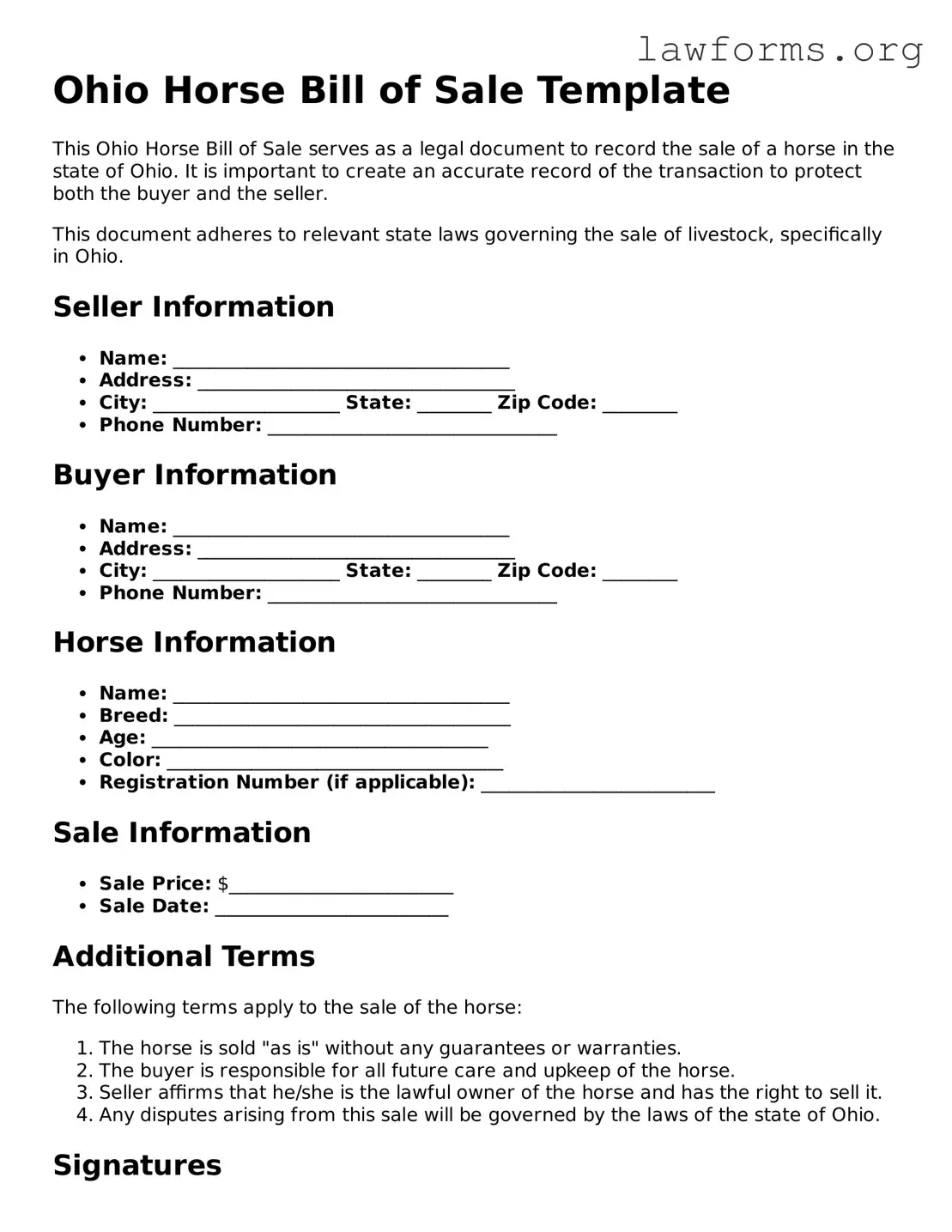Ohio Horse Bill of Sale Template
This Ohio Horse Bill of Sale serves as a legal document to record the sale of a horse in the state of Ohio. It is important to create an accurate record of the transaction to protect both the buyer and the seller.
This document adheres to relevant state laws governing the sale of livestock, specifically in Ohio.
Seller Information
- Name: ____________________________________
- Address: __________________________________
- City: ____________________ State: ________ Zip Code: ________
- Phone Number: _______________________________
Buyer Information
- Name: ____________________________________
- Address: __________________________________
- City: ____________________ State: ________ Zip Code: ________
- Phone Number: _______________________________
Horse Information
- Name: ____________________________________
- Breed: ____________________________________
- Age: ____________________________________
- Color: ____________________________________
- Registration Number (if applicable): _________________________
Sale Information
- Sale Price: $________________________
- Sale Date: _________________________
Additional Terms
The following terms apply to the sale of the horse:
- The horse is sold "as is" without any guarantees or warranties.
- The buyer is responsible for all future care and upkeep of the horse.
- Seller affirms that he/she is the lawful owner of the horse and has the right to sell it.
- Any disputes arising from this sale will be governed by the laws of the state of Ohio.
Signatures
Both parties agree to the terms stated above:
Seller Signature: _______________________________ Date: _______________
Buyer Signature: _______________________________ Date: _______________
